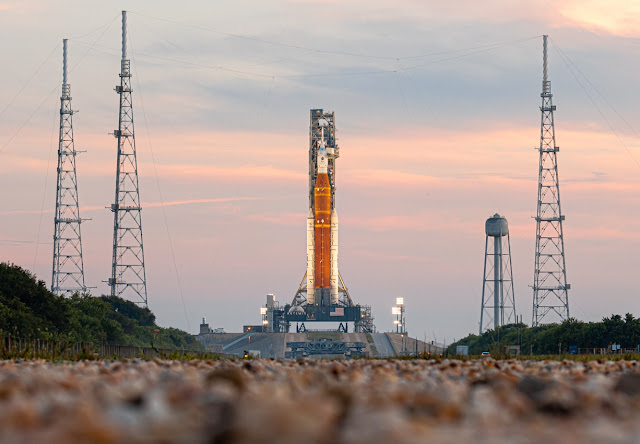That seems to be the direction the Artemis team is working toward according to sources interviewed for Ars Technica. To begin with, though I need to detour to kill this fact I got from somewhere and didn't cross check thoroughly before posting it Monday.
Pre-chilling isn't to reach cryogenic temperatures, although the chilling is done by running some of the liquid hydrogen fuel through the fuel tubing of the engine. They chill the engine until the sensors (wherever they are) reach a temperature of about 40 F (5 C).
The source I saw gave the temperature in degrees Rankine - of all things - which said 500 Rankine and I did the conversion. (I mean, seriously, who uses Rankine in their work?) The reality is yes, they do chill them to extremely low temperatures with the -420F liquid hydrogen. My fault for not looking for other sources.
During a news conference on Tuesday evening, NASA's program manager for the SLS rocket, John Honeycutt, said his engineering team believed the engine had actually cooled down from ambient temperature to near the required level but that it was not properly measured by a faulty temperature sensor.
"The way the sensor is behaving does not line up with the physics of the situation," Honeycutt said.
The problem for NASA is that the sensor cannot be easily replaced and would likely necessitate a rollback to the Vehicle Assembly Building at Kennedy Space Center in Florida, a few kilometers from the launch pad. This would delay the launch of the rocket at least into October, and the space agency is starting to get concerned about wear and tear on a rocket that has now been stacked for nearly a full year.
The belief that the engine actually was the right temperature comes from other observations. Other sensors showed that liquid hydrogen was flowing and the pressures were correct. If hydrogen had been blocked from flowing into the engine, or if it had been spilling unrestrained as it would from a cracked open engine, the pressures would have been other than expected.
Honeycutt said his team is working on a "flight rationale" plan that would allow the rocket to launch without getting good data from the temperature sensor on the engine, but based on all the data they have available. It seems to me they're looking for some sort of consensus of the data that they can make themselves feel good about.
The schedule for today was for teams to crawl all over the vehicle looking for issues, including the inspection of an area where there was a small hydrogen leak during Monday's countdown. If the managers are satisfied with the inspections and their flight rationale for dealing with the faulty temperature sensor, the team will start counting down on Thursday. Fueling will begin Saturday morning. Weather looks better than this past Sunday night/Monday morning, but roughly a 25% chance of showers in the morning, and NWS says chances go up as the day goes on, saying the start of the two hour launch window at 2:17 PM EDT looks better than the end.
The things that linger in my mind are things like if the engine isn't chilled properly can it really be expected to meet its specs. Remember how they said they thought the engine cooled down to near the
required temperature? How near and what does that imply? If instead of -420F it's higher but still cryogenic, say -380F (number pulled from "air"), will flight software abort the launch? In the shuttle days, if the engines weren't up to rated pressures and powers within seconds, the software aborted the mission. Blowing up at ignition is bad, but perhaps blowing up in the first couple of minutes of flight is worse. Then I think NASA has never completed fueling this vehicle and not done a static firing of it in this configuration.
Artemis I/SLS on Pad 39B, August 19. Trevor Mahlmann photo.























